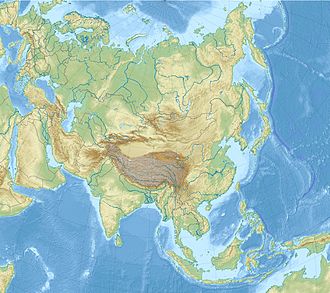| Flowering Calendar of Orchids in Lloyd Botanical Garden |
| Sl. No. | MARCH – APRIL | Sl. No. | JUNE – JULY |
| 1 | Calanthe puberula Lindl. | 1 | Agrostophyllum callosum Rchb.f. |
| 2 | Coelogyne flaccida Lindl. | 2 | Bulbophyllum leopardinum (Wall.) Lindl. |
| 3 | Coelogyne corymbosa Lindl. | 3 | Cryptochilus lutea Lindl. |
| 4 | Coelogyne cristata Lindl. | 4 | Dendrobium gibsonii Lindl. |
| 5 | Dendrobium nobile var. alba Lindl. | 5 | Liparis pusilla Ridl. |
| 6 | Dendrobium nobile var. pendulum Lindl. | 6 | Liparis resupinata Ridl. |
| 7 | Dendrobium nobile var. virginalis Lindl. | 7 | Spiranthes sinensis (Pers.) Ames. |
| 8 | Eria confusa Hook.f. | | JUNE – AUGUST |
| 9 | Eria convallarioides Lindl. | 1 | Paphiopedilum hirsutissimum Pfitz. |
| 10 | Goodyera foliosa (Lindl.) Benth. ex C.B. Clarke | | JULY – AUGUST |
| 11 | Habenaria sp. | 1 | Sarcanthus pallidus Lindl. |
| 12 | Renanthera imschootiana Rolfe | | AUGUST – SEPTEMBER |
| 13 | Vanda cristata var. multiflora Hort. | 1 | Anthogonium gracile Lindl. |
| MARCH – MAY | 2 | Bulbophyllum cariniflorum Rchb.f. |
| 1 | Papilionanthe vandarum Rchb.f. | 3 | Calanthe masuca (D.Don)Lindl. |
| 2 | Cymbidium eburneum Lindl. | 4 | Dendrobium chrysanthum Wall.ex Lindl. |
| 3 | Dendrobium longicornu Lindl. | 5 | Dendrobium hookerianum Lindl. |
| 4 | Epigenium rotundatum (Lindl.)Summ. | 6 | Eria acervata Lindl. |
| 5 | Phaius maculates Lindl. | 7 | Sobralia amesiana Sander |
| 6 | Saturopsis undulatus Benth. | 8 | Thunia venosum Rolfe. |
| 7 | Coelogyne flavida Wall. ex Lindl. | | SEPTEMBER – OCTOBER |
| 8 | Dendrobium falconeri Hook. | 1 | Coelogyne barbata Lindl. ex Griff. |
| 9 | Dendrobium nobile Lindl. | 2 | Coelogyne occultata Hook.f. |
| 10 | Doritis taenialis (Lindl.) Hook.f. | 3 | Cymbidium mastersii Griff. ex Lindl. |
| 11 | Phaius wallichii Lindl. | | SEPTEMBER – NOVEMBER |
| 12 | Trudelia cristata (Lindl.) Senghas | 1 | Cymbidium affine Warn. |
| MARCH – JUNE | 2 | Cymbidium cochleare Lindl. |
| 1 | Masdevallia harrisonii | 3 | Cymbidium elegans Lindl. |
| MARCH – NOVEMBER | 4 | Cymbidium gammieanum Rolfe. |
| 1 | Eria coronaria (Lindl.) Rchb.f. | 5 | Cymbidium giganteum Wall. ex Lindl. |
| 2 | Eria stricta Lindl. | 6 | Cymbidium longifolium D.Don |
| APRIL – MAY | 7 | Epigenium amplum (Lindl.)Summ. |
| 1 | Calanthe chloroleuca Lindl. | 8 | Oberonia iridifolia Lindl. |
| 2 | Coelogyne elata Lindl. | 9 | Vanda coerulea Griff. ex.Lindl. |
| 3 | Dendrobium densiflorum Lindl.ex Wall. | | OCTOBER – DECEMBER |
| APRIL – JUNE | 1 | Cymbidium tracyanum Rolfe. |
| 1 | Aerides biswasiana Mukherjee & Ghose | 2 | Pleione praecox (J.E.Smith) D. Don |
| 2 | Cymbidium devonianum Lindl. ex Paxton | | OCTOBER - JANUARY |
| 3 | Cymbidium lowianum Rchb.f. | 1 | Paphiopedilium insigne Pfitz. |
| MAY – JUNE | | NOVEMBER – DECEMBER |
| 1 | Coelogyne ochracea Lindl. | 1 | Otochilus albus Lindl. |
| 2 | Coelogyne prolifera Lindl. | 2 | Otochilus fuscus Lindl. |
| 3 | Dendrobium brymerianum Rchb.f. | | NOVEMBER – JANUARY |
| 4 | Thunia alba (Lindl.) Rchb.f. | 1 | Paphiopedilum villosum Lindl. |
| JUNE | | NOVEMBER – FEBRUARY |
| 1 | Pholidota imbricata Hook. | 1 | Paphiopedilum villosum var. boxallii (Rchb.f.) Pfitzer |
| | | DECEMBER – FEBRUARY |
| | 1 | Cymbidium grandiflorum Griff. |










